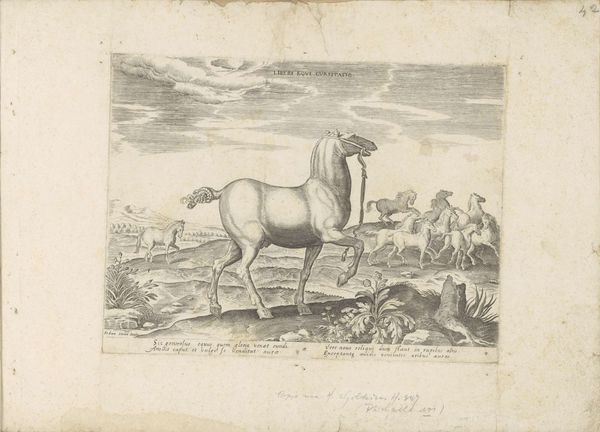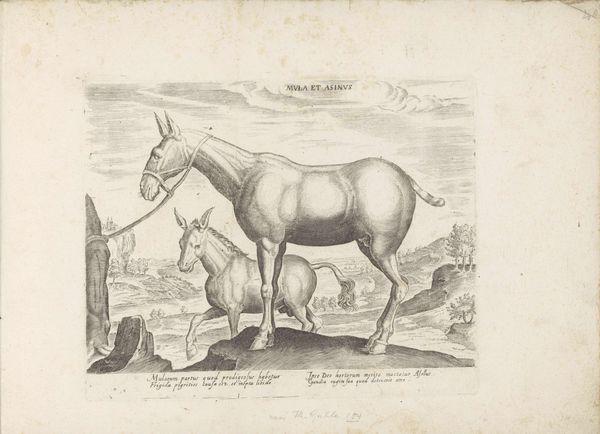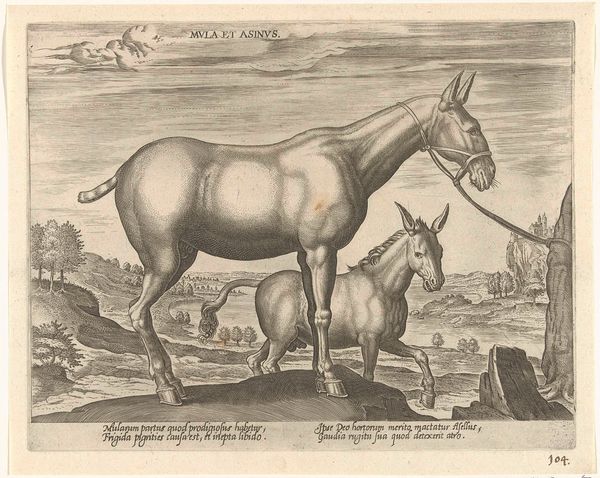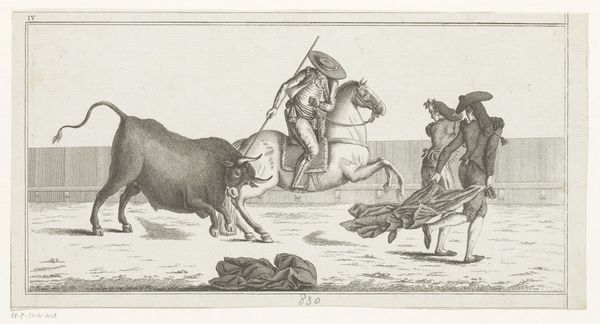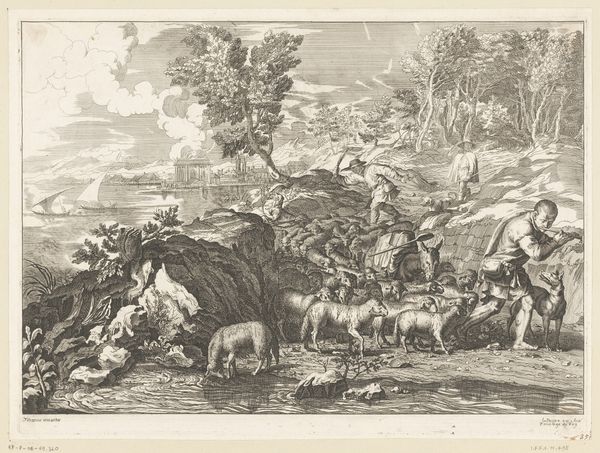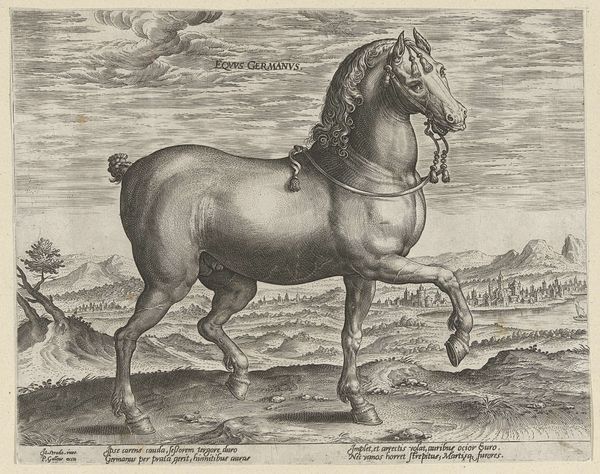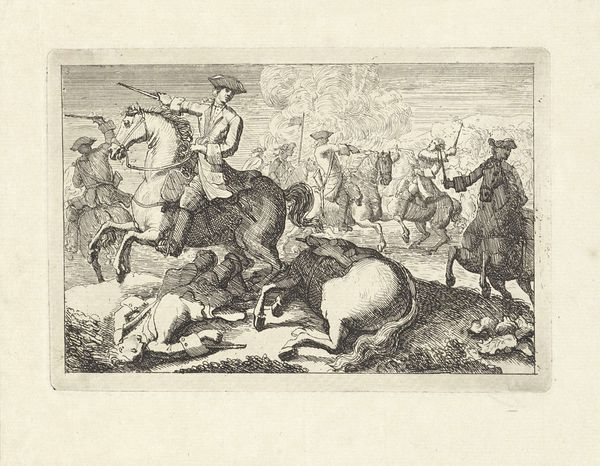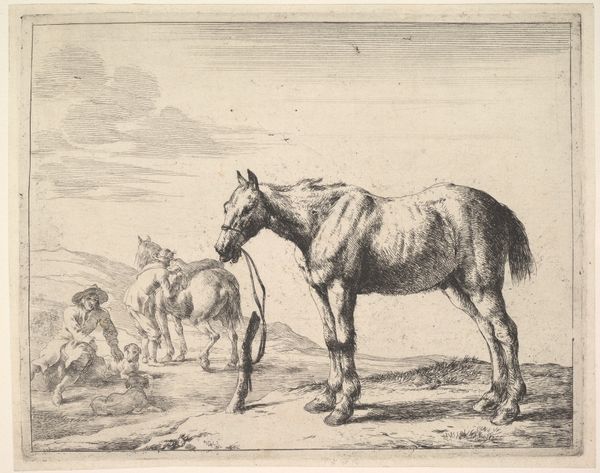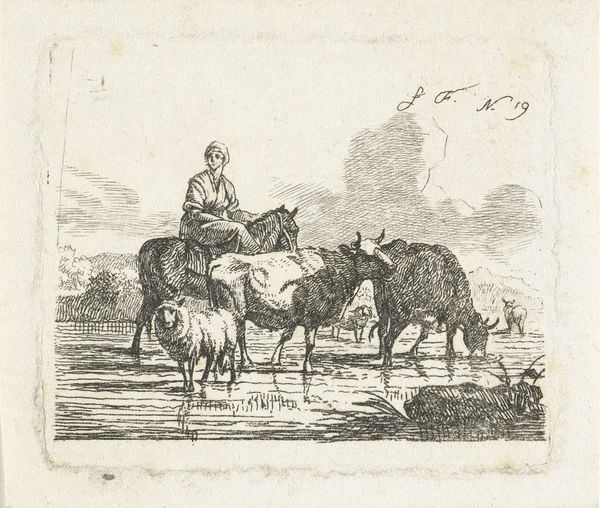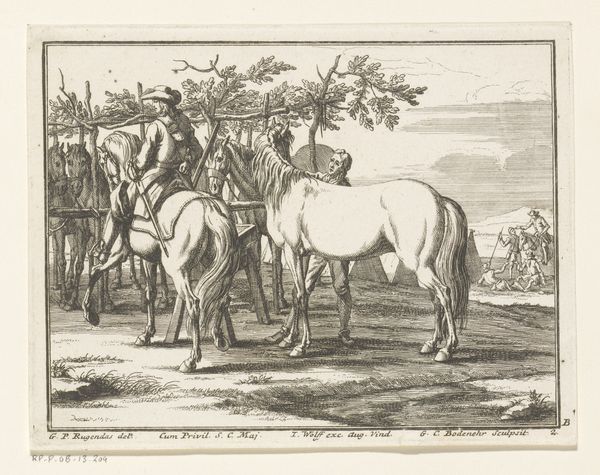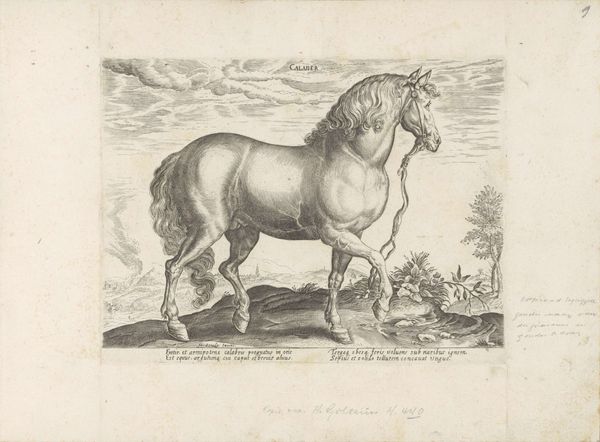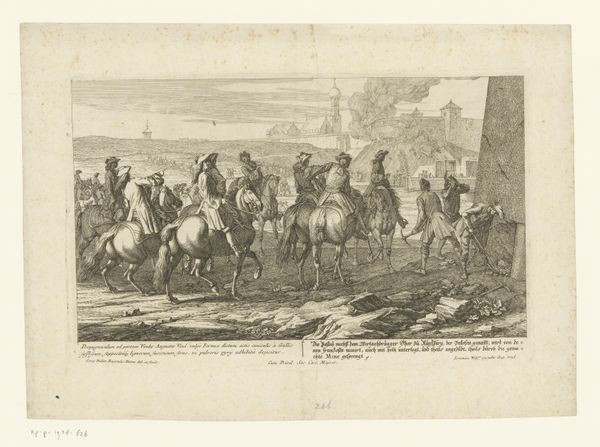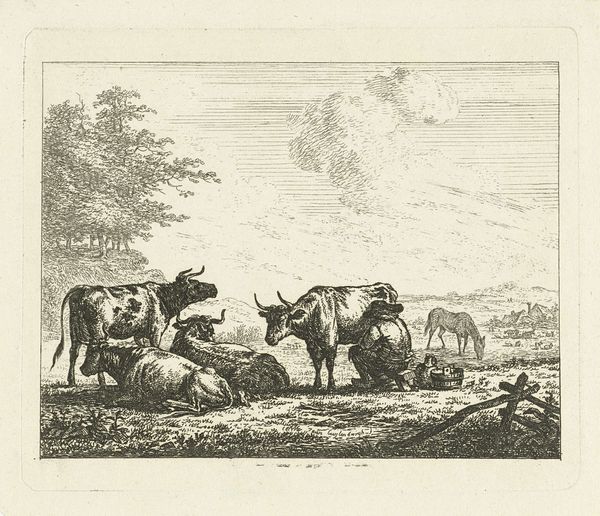
print, engraving
#
animal
# print
#
old engraving style
#
landscape
#
mannerism
#
figuration
#
horse
#
history-painting
#
engraving
Dimensions: width 264 mm, height 204 mm
Copyright: Rijks Museum: Open Domain
Editor: This is "Kudde wilde paarden," or "Herd of Wild Horses," an engraving by Hendrick Goltzius, made around 1578 to 1582. The level of detail is astonishing, especially in the musculature of the large horse in the foreground. What stands out to you in this piece? Curator: What immediately grabs my attention is the way Goltzius situates the horse – and thus, the representation of power and nobility – within the framework of the print market and evolving humanist thought. Consider the Latin inscription. How does the inclusion of text transform the reading of this image? Editor: I noticed the inscription. I'm not sure I follow about transforming the reading, though? Curator: Well, prints like this weren't just art objects; they were vehicles for ideas. This image is participating in the popularization of classical themes and ideals, particularly ideals concerning the aristocracy and nobility. This image had the potential to be distributed broadly to various people, and shape how various social groups see the equestrian image in culture. How might access shape how audiences see the status of nobility in society? Editor: Ah, I see. The print makes this classical imagery accessible beyond the elite. Curator: Exactly! Also notice how the exaggerated, almost grotesque musculature of the main horse aligns with Mannerist aesthetics. How do you think that stylistic choice played into the contemporary reception of the work? Editor: Maybe the stylization makes it clear this isn't just about representing horses realistically, it's making a statement? It's sort of flaunting the artist's skill, right? Curator: Precisely. The print becomes a display of Goltzius’ virtuosity. He is showing that printed media, and those who make them, are indeed purveyors of not only images but also of meaning that may shape society’s perspective on status. It’s interesting to ponder on what effect that distribution had back in the day, when such art pieces had higher impacts to specific segments of society. Editor: I never thought about art being this deeply tied to marketing and social status. That makes me consider the influence of the media surrounding art itself. Curator: Precisely. Art isn't made in a vacuum.
Comments
No comments
Be the first to comment and join the conversation on the ultimate creative platform.
